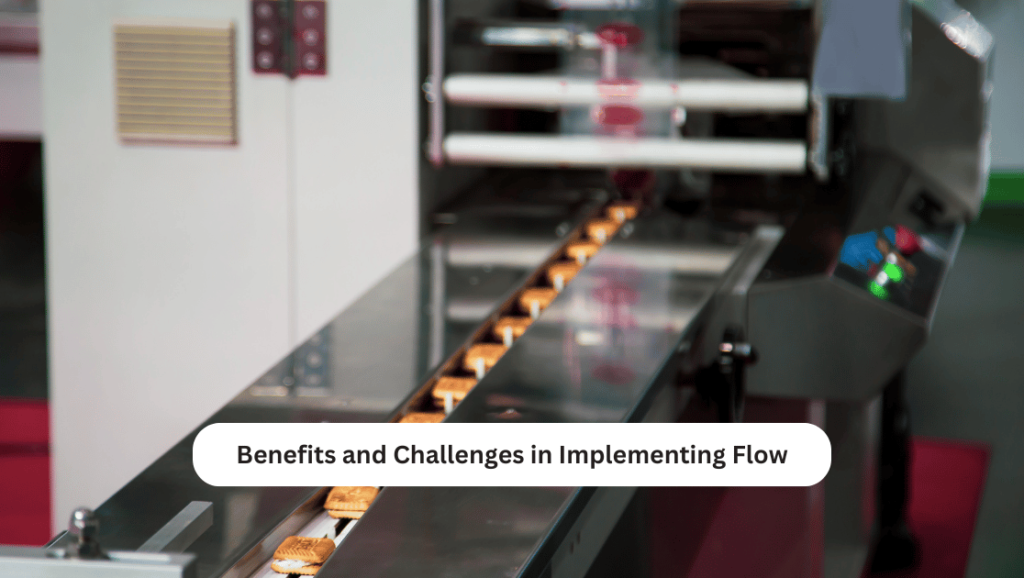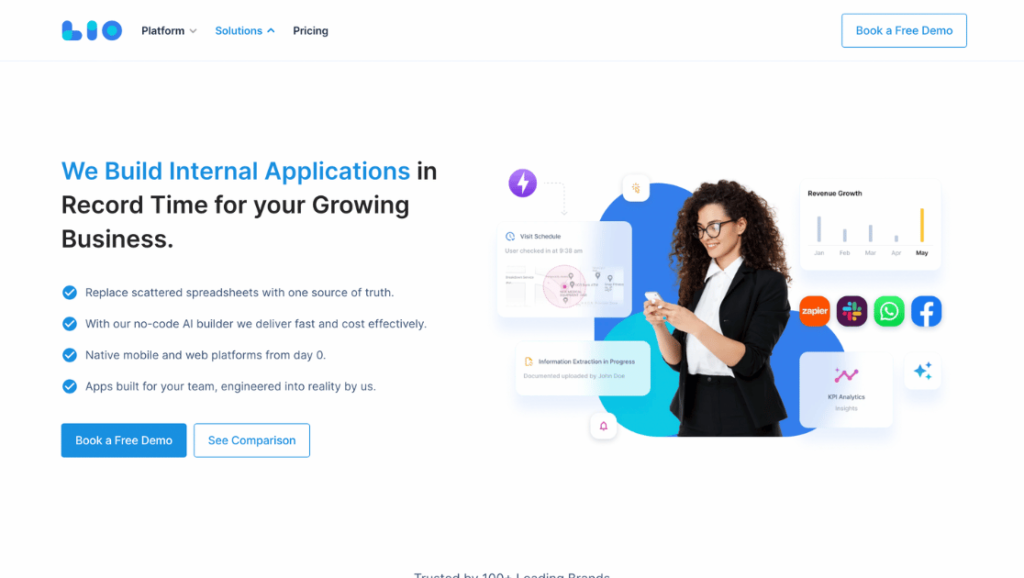The 5 Core Principles of Lean Manufacturing: A Comprehensive Guide
Gaurav Singh Rawat
- June 27, 2024
- 17 Min Read

Lean manufacturing has revolutionized production systems and business operations across industries since its development by Toyota in the mid-20th century. At its core, lean is about maximizing customer value while minimizing waste. The lean methodology aims to create more value for customers with fewer resources by optimizing processes and eliminating non-value-adding activities.
While lean originated in manufacturing, its principles have been successfully applied to services, healthcare, construction, software development, and many other fields. The fundamental concepts of lean are universal and can drive efficiency and continuous improvement in any organization.
5 Core Lean Manufacturing Principles
This article will explore in depth the 5 core principles of lean manufacturing as defined by Womack and Jones in their seminal book “Lean Thinking”:
- Value
- Value Stream
- Flow
- Pull
- Perfection
We’ll examine each principle in detail, looking at key concepts, implementation strategies, challenges, and real-world examples. Understanding and applying these principles is essential for any organization looking to adopt lean practices and create a culture of continuous improvement.

Master Lean Techniques
Gain expertise in essential lean manufacturing tools like 5S, Kaizen, and Value Stream Mapping. Transform your workplace into a lean, efficient powerhouse.
Value
The first and most fundamental principle of lean is defining value from the customer’s perspective. Value is what the customer is willing to pay for and is the starting point for all lean initiatives.
Understanding Customer Value
In lean thinking, value is defined solely by the end customer. It’s not about what the company thinks is valuable, but what the customer perceives as valuable. This requires a deep understanding of customer needs, preferences, and pain points.
Some key aspects of understanding customer value include:
– Identifying the specific features and attributes of a product or service that customers truly value
– Determining the price customers are willing to pay
– Understanding the level of quality and reliability customers expect
– Recognizing the timeliness and convenience factors that matter to customers
– Uncovering unmet or unarticulated customer needs
Organizations must engage directly with customers through surveys, interviews, focus groups, and observation to gain these insights. It’s also important to segment customers and recognize that different customer groups may define value differently.
Aligning Internal Processes with Customer Value
Once customer value is clearly defined, the entire organization needs to align its processes and activities to deliver that value. This often requires a shift in mindset from an internal, company-centric view to an external, customer-centric perspective.
Some strategies for aligning with customer value include:
– Mapping out how each business process contributes to delivering customer value
– Eliminating activities that don’t add value from the customer’s perspective
– Redesigning products and services based on customer value insights
– Training and managing employees to understand and focus on customer value
– Developing metrics and KPIs that measure value delivery to customers

Challenges in Defining Value
While the concept of customer-defined value seems straightforward, there are several challenges in implementing it:
– Customers may not always be able to articulate what they value, especially for innovative products
– Customer needs and preferences can change rapidly
– There may be conflicts between different customer segments
– Short-term customer desires may conflict with long-term value creation
– Internal stakeholders may resist changing established processes
Organizations need to develop robust systems for continuously assessing and redefining customer value to overcome these challenges.
Examples of Value Definition
Here are some examples of how companies have defined value from the customer’s perspective:
– Toyota: Reliable, fuel-efficient cars at an affordable price
– Amazon: Wide product selection, competitive prices, fast delivery, and hassle-free returns
– Apple: Innovative, user-friendly devices with seamless ecosystem integration
– Southwest Airlines: Low-cost, no-frills air travel with excellent customer service
By clearly defining value, these companies have been able to align their entire operations around delivering what matters most to their customers.
Value Stream
The second lean principle involves mapping out the entire value stream for each product or service. The value stream includes all the steps and processes involved in delivering value to the customer, from concept to delivery.

Streamline Your Workflow
Create smooth, uninterrupted flow in your production process. Learn how to implement lean principles for faster lead times and reduced inventory.
Identifying the Value Stream
A value stream map visually represents every step involved in the flow of a product or service from supplier to customer. It includes both value-adding and non-value-adding activities. The goal is to identify and eliminate waste in the process.
Key elements of value stream mapping include:
– Documenting the current state of processes
– Identifying value-adding and non-value-adding steps
– Measuring cycle times, wait times, and inventory levels
– Analyzing information and material flows
– Highlighting bottlenecks and constraints
Value stream mapping provides a holistic view of the entire process, allowing organizations to see beyond individual departments or functions.
Types of Waste in the Value Stream
Lean identifies 8 types of waste (often remembered by the acronym DOWNTIME) that can occur in any value stream:
– Defects: Errors or quality issues requiring rework
– Overproduction: Producing more than is needed or before it’s needed
– Waiting: Idle time between process steps
– Non-utilized talent: Underutilizing people’s skills and capabilities
– Transportation: Unnecessary movement of materials or information
– Inventory: Excess stock or work-in-progress
– Motion: Unnecessary movement of people
– Excess processing: Doing more work than the customer requires
Identifying and eliminating these wastes is a key focus of value stream analysis.
Improving the Value Stream
Once the current state is mapped and waste is identified, organizations can design an improved future state. This typically involves:
– Eliminating non-value-adding steps
– Reducing wait times and inventory levels
– Improving flow and reducing batch sizes
– Standardizing work processes
– Implementing pull systems
– Balancing workloads across the value stream
The goal is to create a lean value stream that delivers maximum value to the customer with minimum waste.

Challenges in Value Stream Mapping
Some common challenges in implementing value stream mapping include:
– Resistance to exposing inefficiencies and waste
– Difficulty in seeing beyond functional silos
– Lack of accurate data on process times and inventory levels
– Complexity in mapping information flows, especially in service industries
– Implementing and sustaining improvements identified through mapping
Overcoming these challenges requires strong leadership commitment, cross-functional collaboration, and a culture of continuous improvement.
Examples of Value Stream Improvement
Here are some examples of how companies have improved their value streams:
– Boeing reduced the assembly time for its 737 aircraft from 28 days to 11 days by streamlining its production line and implementing just-in-time delivery of parts.
– Zara’s fast-fashion model is built on a highly efficient value stream that can take a design from concept to store shelves in as little as 15 days.
– Toyota’s famous production system is centered around continuous value stream improvement, with techniques like kanban and jidoka used to optimize flow and eliminate waste.
By focusing on the entire value stream, these companies have been able to dramatically improve efficiency and responsiveness to customer needs.
Flow
The third lean principle focuses on creating smooth, uninterrupted flow through the value stream. Once value has been defined and the value stream mapped, the goal is to make value-creating steps occur in tight sequence so the product or service will flow smoothly toward the customer.
Understanding Flow
In lean thinking, flow refers to the progressive achievement of tasks along the value stream so that a product proceeds from design to launch, order to delivery, and raw materials to the customer without stoppages, scrap, or backflows.
Key characteristics of good flow include:
– Minimal (or zero) work-in-progress inventory between steps
– Short and predictable throughput times
– No waiting or delays between value-adding activities
– Continuous movement of products or information
– Balanced workloads across all process steps
The ideal is to achieve one-piece flow, where individual products move through the value stream one at a time, without batching.

Maximize Customer Value
Learn how to align your processes with customer needs. Implement lean principles to deliver higher quality products faster and at lower costs.
Creating Flow
Implementing flow often requires a radical redesign of the production process. Some key strategies for creating flow include:
– Organizing production into cells or value streams instead of functional departments
– Right-sizing equipment to avoid batching
– Implementing standardized work to ensure consistency
– Using visual management to make flow visible and identify interruptions
– Balancing workloads and leveling production (heijunka)
– Reducing setup times to enable smaller batch sizes
– Implementing mistake-proofing (poka-yoke) to prevent defects and interruptions
The goal is to create a smooth, predictable process where value flows to the customer without interruption.
Benefits of Flow
Implementing flow can lead to numerous benefits:
– Reduced lead times and faster delivery to customers
– Improved quality due to immediate feedback on defects
– Lower inventory levels and associated costs
– Increased flexibility and responsiveness to changes in demand
– Better space utilization and reduced transportation
– Improved employee engagement and problem-solving
By focusing on flow, organizations can dramatically improve their efficiency and responsiveness.

Challenges in Implementing Flow
Creating flow can be challenging, especially in traditional batch-and-queue production systems. Some common obstacles include:
– Resistance to moving away from large batch sizes
– Difficulty in balancing workloads across different process steps
– The need for cross-training to enable flexible workforce allocation
– Challenges in synchronizing suppliers with a flow-based production system
– The need for reliable equipment to prevent flow interruptions
Overcoming these challenges often requires a significant cultural shift and investment in training and equipment.
Examples of Flow Implementation
Here are some examples of how companies have implemented flow:
– Toyota’s production lines are the quintessential example of flow, with cars moving continuously through assembly with minimal work-in-progress.
– Dell revolutionized the PC industry by implementing a build-to-order system with rapid flow from order to delivery.
– FastCap, a woodworking tool manufacturer, redesigned its factory layout to create one-piece flow, reducing lead times from weeks to days.
These examples demonstrate how flow can be implemented in various industries to dramatically improve efficiency and customer responsiveness.
Pull
The fourth lean principle is establishing pull throughout the value stream. In a pull system, nothing is produced until it is needed by the downstream customer, whether that’s an end consumer or the next process in the production line.
Understanding Pull Systems
In contrast to traditional push systems where production is based on forecasts, pull systems are driven by actual customer demand. Key characteristics of pull systems include:
– Production is initiated by customer orders
– Work is pulled through the system based on downstream demand
– Inventory levels are minimized
– Production rate is synchronized with customer demand rate
– Overproduction is eliminated
Pull systems are closely linked to the concept of Just-in-Time (JIT) production, where products are made only when needed and in the quantities needed.

Lean Manufacturing 101
New to lean? Get a comprehensive introduction to lean manufacturing principles. Learn the fundamentals and start applying them to your business immediately.
Implementing Pull
Implementing a pull system typically involves several key steps:
– Establish a pacemaker process that sets the production rhythm
– Implement kanban systems to signal demand between processes
– Create supermarkets (small, controlled inventory buffers) where needed
– Develop a mix-leveling system to smooth out variations in demand
– Implement visual management systems to make pull signals clear
– Train employees in pull system principles and operation
The goal is to create a system where each process only produces what its customer process needs, when it needs it.
Benefits of Pull Systems
Pull systems offer numerous advantages:
– Reduced inventory levels and associated costs
– Improved cash flow due to lower inventory investment
– Increased flexibility to respond to changes in demand
– Better quality due to smaller batch sizes and quicker detection of defects
– Reduced overproduction waste
– Improved visibility of production status and issues
By implementing pull, organizations can become more responsive to customer needs while reducing waste and inventory costs.
Challenges in Implementing Pull
Transitioning to a pull system can be challenging. Some common obstacles include:
– Resistance to reducing batch sizes and inventory levels
– Difficulty in managing variability in customer demand
– The need for reliable and flexible production processes
– Challenges in synchronizing suppliers with a pull-based system
– Cultural resistance to giving up the “security” of large inventories
Overcoming these challenges often requires a significant shift in mindset and careful change management.
Examples of Pull Systems
Here are some examples of how companies have implemented pull systems:
– Toyota’s kanban system is the classic example of a pull system, with production at each stage triggered by downstream demand.
– Walmart’s vendor-managed inventory system uses point-of-sale data to automatically trigger replenishment orders to suppliers.
– Zara’s fast-fashion model uses a pull system to quickly respond to customer preferences and trends.
These examples show how pull systems can be implemented in both manufacturing and retail environments to improve efficiency and responsiveness.
Perfection
The fifth and final lean principle is the pursuit of perfection. This principle recognizes that lean is not a static state to be reached, but a continuous journey of improvement.
Understanding the Pursuit of Perfection
In lean thinking, perfection is defined as:
– Perfectly meeting customer needs
– Zero waste in all processes
– Continuous flow of value to the customer
– Pull-based production in exact quantities needed
While true perfection may be unattainable, the pursuit of it drives continuous improvement and prevents complacency.
Strategies for Pursuing Perfection
Pursuing perfection involves several key strategies:
– Continuous Improvement (Kaizen): Encouraging all employees to constantly seek ways to improve processes
– Root Cause Analysis: Systematically identifying and addressing the root causes of problems
– Plan-Do-Check-Act (PDCA) Cycles: Implementing improvements in a structured, iterative manner
– Standardization: Establishing best practices and continuously improving them
– Visual Management: Making problems and improvement opportunities visible
– Metrics and KPIs: Tracking key performance indicators to measure progress
– Benchmarking: Comparing performance against best-in-class organizations
– Cross-functional Problem Solving: Engaging diverse perspectives in improvement efforts
The goal is to create a culture where everyone is constantly striving to improve and eliminate waste.
Benefits of Pursuing Perfection
The pursuit of perfection drives numerous benefits:
– Continuous performance improvement
– Increased employee engagement and problem-solving skills
– Enhanced adaptability to changing market conditions
– Sustained competitive advantage
– Improved quality and customer satisfaction
– Ongoing cost reduction and efficiency gains
By constantly striving for perfection, organizations can stay ahead of competitors and continue to delight customers.
Challenges in Pursuing Perfection
The journey towards perfection is not without challenges:
– Maintaining momentum and enthusiasm for improvement over time
– Balancing short-term performance with long-term improvement
– Overcoming resistance to change and complacency
– Allocating resources for improvement activities
– Measuring and quantifying improvement in complex systems
Overcoming these challenges requires strong leadership commitment and a supportive organizational culture.
Examples of Pursuing Perfection
Here are some examples of how companies pursue perfection:
– Toyota’s famous “5 Whys” technique for root cause analysis exemplifies its commitment to continuous improvement.
– Google’s “20% time” policy, which allows engineers to spend 20% of their time on side projects, has led to innovations like Gmail and Google News.
– Alcoa’s focus on worker safety as a key performance metric drove continuous improvement across all aspects of its operations.
These examples demonstrate how the pursuit of perfection can drive innovation and performance improvement across various industries.
How can Lio help you with Lean Manufacturing?
Lio offers a versatile AI-powered platform that can significantly enhance lean manufacturing efforts across various industries. Here are some key ways Lio can support lean manufacturing principles:

Lean, Agile, Efficient
Embrace lean principles and boost productivity with Lio. Our AI-powered platform integrates seamlessly with your existing systems, enabling real-time monitoring and optimization of your manufacturing processes.
Rapid Application Development
Lio’s no-code AI platform allows businesses to develop custom applications for manufacturing processes in just days. This rapid development capability is crucial for achieving agile manufacturing, enabling quick adaptability to changing market demands without lengthy software development cycles.
Seamless Integration
Lio offers integration with over 100 existing applications, allowing manufacturers to connect their Lio-powered applications with ERP systems, MES, IoT devices, and other manufacturing software. This seamless integration facilitates smooth data exchange and interoperability, ensuring that lean manufacturing processes can be implemented without disrupting existing workflows.
Customizable Workflows
Lio empowers businesses to create custom workflows tailored to their specific manufacturing needs. With its intuitive interface, manufacturers can design and optimize workflows that align with their unique processes and requirements. This flexibility is vital for lean manufacturing, allowing businesses to adapt quickly to changes in product mix, production volume, and customer demands.
Scalable Infrastructure
Lio’s cloud-based architecture provides the scalability and flexibility needed for growing manufacturing operations. This ensures that manufacturers can accommodate higher user loads, data volumes, and transaction rates without compromising performance or reliability as they scale their lean initiatives.
Mobile Accessibility
Lio’s mobile-friendly platform ensures that manufacturing teams can access critical information and perform tasks on the go. This agility is essential for lean manufacturing, as it enables quick response to changes, reduces downtime, and improves overall operational efficiency.

Conclusion
The five principles of lean manufacturing – Value, Value Stream, Flow, Pull, and Perfection – provide a powerful framework for improving efficiency, reducing waste, and delivering superior value to customers. While each principle is important in its own right, they are most effective when implemented together as an integrated system.
Implementing lean is not a one-time event, but a journey of continuous improvement. It requires a fundamental shift in thinking, from traditional batch-and-queue production to a customer-focused, flow-based system. This shift often involves significant cultural and organizational changes.
The rewards of successfully implementing lean can be substantial. Companies that have embraced lean principles have seen dramatic improvements in productivity, quality, lead times, and customer satisfaction. Moreover, the lean journey creates a culture of continuous improvement that can drive sustained competitive advantage.
As businesses face increasing competition and rapidly changing market conditions, the ability to efficiently deliver customer value becomes ever more critical. The lean principles provide a proven approach for achieving this, enabling organizations to do more with less and stay responsive to customer needs.
Frequently Asked Questions (FAQs)
What is the primary goal of lean manufacturing?
The primary goal of lean manufacturing is to maximize customer value while minimizing waste. This involves creating more value for customers using fewer resources by optimizing processes and eliminating non-value-adding activities.
How does lean manufacturing differ from traditional manufacturing?
Traditional manufacturing often relies on large batch production and inventory buildup based on forecasts. In contrast, lean manufacturing focuses on producing only what is needed when it is needed, based on actual customer demand, thereby reducing waste and improving efficiency.
What are the main types of waste identified in lean manufacturing?
Lean manufacturing identifies eight types of waste: defects, overproduction, waiting, non-utilized talent, transportation, inventory, motion, and excess processing. These wastes are often remembered by the acronym DOWNTIME.
How can lean manufacturing principles be applied to non-manufacturing industries?
Lean principles can be applied to any industry by focusing on value from the customer’s perspective, mapping and improving value streams, creating flow, implementing pull systems, and striving for continuous improvement. This approach can enhance efficiency and reduce waste in sectors such as healthcare, software development, and services.
What is the role of leadership in implementing lean manufacturing?
Leadership plays a crucial role in implementing lean manufacturing by fostering a culture of continuous improvement, providing necessary resources and training, and leading by example. Leaders must support and engage employees at all levels to ensure successful lean implementation.
How does lean manufacturing impact employee roles and responsibilities?
Lean manufacturing often empowers employees by involving them in problem-solving and continuous improvement activities. It encourages a collaborative work environment where employees are responsible for identifying and eliminating waste in their processes.
What is the significance of continuous improvement (Kaizen) in lean manufacturing?
Continuous improvement, or Kaizen, is a core principle of lean manufacturing that involves making incremental improvements to processes on an ongoing basis. It encourages all employees to contribute ideas for enhancing efficiency, reducing waste, and improving quality.


